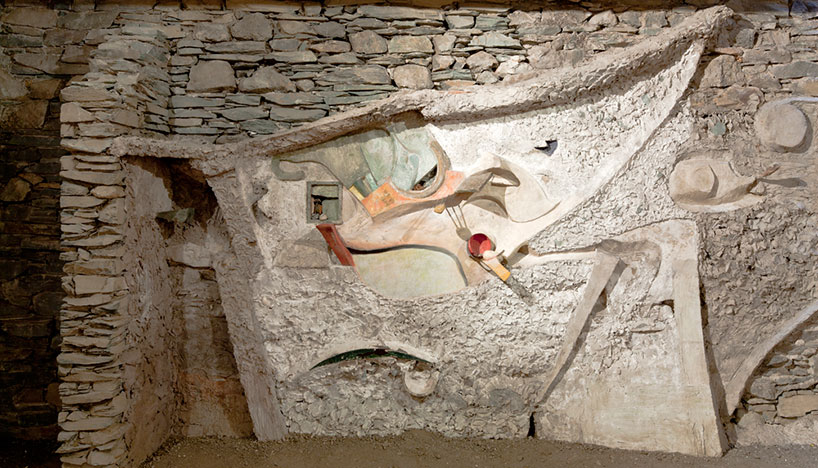Merz Barn Wall
From there to here – the fascinating journey of the Merz Barn Wall
Published on: 20 February 2019
It was a monumental undertaking and a unique experience for three students from Newcastle as they set out to preserve the last big project of German artist Kurt Schwitters – the Merz Barn Wall.
Rescuing a masterpiece
In 1965, the students began the daunting task of saving the masterpiece from its decaying state in a Lake District barn and bringing it to Newcastle University to make it accessible for the public.
More than a half century on, Fred Brookes – one of those three students – will give an insight into the journey of surveying, documenting, removing, rebuilding and repairing the Merz Barn Wall, in a free public lecture at Newcastle University.
Mr Brookes explained: “I became involved in the project to rescue the Merz Barn while I was a Fine Art student at Newcastle and it changed my life. I will be explaining what it is, why it is like it is, what happened to it, and how the artwork that remains can be read.”
Today, the Merz Barn Wall takes pride of place at the centre of Newcastle University’s Hatton Gallery where it is has been on permanent display since May 1965.

A long and varied career
Born in Hanover, Germany in 1887, Kurt Schwitters had a long and varied career. Besides being an artist, he was a musician and a poet, whose works were influenced by dada and constructivism. People described him as a flamboyant character.
In his art works Schwitters broke away from the use of traditional materials and he is celebrated for pioneering the art of collage. In his work he used whatever materials were to hand, such as scraps of paper and miscellaneous broken items. In doing so, he created the term ‘Merz’, which means putting something out of its initial context by adding something completely different to it so that the whole piece changes.
While he was alive, Schwitters' work was not well-known in Germany and received greater recognition abroad. He was working in Hanover when the Second World War began, but fled to Norway when the Nazis condemned his art as degenerate. When the Nazis invaded Norway, Schwitters took the last ship to the UK and ended up in an internment camp on the Isle of Man.
When the war was over, he decided to stay in the UK and after going to London for a short time, he moved to the Lake District where he lived for the last few years of his life.
During his life, Schwitters worked on four Merzbauten or 'Merz buildings'. In 1947, knowing he didn’t have much time left, he began his last large-scale work - the Elterwater Merz Barn Wall. The materials he used reflected his immediate surroundings in the Lake District such as flowers, branches and stones.
However Schwitters died before he could finish it, and in 1958 the Hatton Gallery hosted a retrospective exhibition of his work. After the exhibition, the decaying condition of the Elterwater Merz Barn Wall came to light and the five-month operation to relocate and restore Kurt Schwitters’ final artwork was launched.
Fred Brookes’ talk, “Kurt Schwitters’ Merz Barn Wall – From there to here”, will take place at 5.30pm, Thursday 28 February as part of Newcastle University’s Insights series of free public lectures. All seats are allocated on a first-come, first-served basis.



